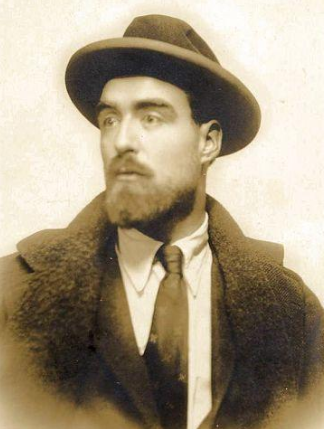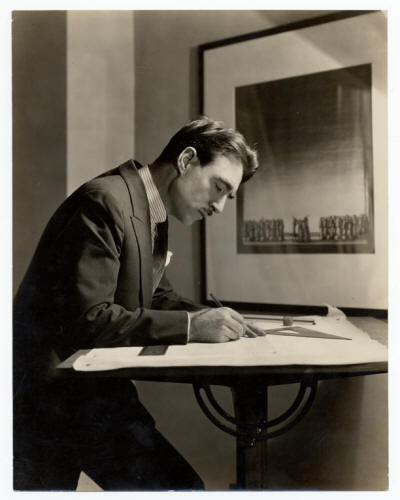 Robert
Edmond "Bobby" Jones (December 12, 1887 – November 26, 1954) was an
American scenic, lighting, and costume designer.[1]
Robert
Edmond "Bobby" Jones (December 12, 1887 – November 26, 1954) was an
American scenic, lighting, and costume designer.[1]
Queer Places:
Harvard University (Ivy League), 2 Kirkland St, Cambridge, MA 02138
New Hampshire Farm Museum, 1305 White Mountain Hwy, Milton, NH 03851
 Robert
Edmond "Bobby" Jones (December 12, 1887 – November 26, 1954) was an
American scenic, lighting, and costume designer.[1]
Robert
Edmond "Bobby" Jones (December 12, 1887 – November 26, 1954) was an
American scenic, lighting, and costume designer.[1]
He is credited with incorporating the new stagecraft into the American drama. His designs sought to integrate the scenic elements into the storytelling instead of having them stand separate and indifferent from the play’s action. His visual style, often referred to as simplified realism, combined bold vivid use of color and simple, yet dramatic, lighting.
Born on December 12, 1887, the son of Fred P. and Emma (Cowell) Jones of Plummer's Ridge, Milton, New Hampshire. he was the second of six children, and he and his siblings were the last generation to grow up on the farm. He attended school on Plummers’ Ridge and then went to Nute High School. After his brother (Charles) was accepted into Harvard, Jones worked as a teacher for a couple of years to raise the money to join him.
Jones attended Harvard University and graduated in 1910. He was in Harvard Dramatic Club with John Reed for whom Jones designed labor posters. Jones moved to New York after his departure from Harvard in 1912 and had a short-lived career designing costumes for the theatrical producers Ray Comstock and Morris Gest, but he eventually found himself living on park benches. It was during this low period of his life that he renewed his friendship with the political activist John Reed. Through Reed and art patron Mabel Dodge, Reed’s companion at the time, money was raised in the name of the “Robert E. Jones Transportation and Development Company”, which allowed him to study informally at Max Reinhardt’s Deutsches Theatre in Berlin in 1913 until the outbreak of World War I.
In 1913 Jones and several friends sailed to Europe to study the new stagecraft with Edward Gordon Craig in Florence. The school in Florence would not accept Jones so he went to Berlin instead, spending a year in informal study with Max Reinhardt’s Deutsches Theater.

With the onset of World War I, Jones sailed back to New York City and got a career break by landing a set design job for a play. He moved in with Eugene O’Neill and his wife.
For a 1915 production of The Man Who Married a Dumb Wife directed by Harley Granville-Barker, Jones designed a fairly simple set that complemented the action and the other design elements of the production rather than overwhelming it.
His innovative designs for Vladimir Rosing's American Opera Company in 1927 and 1928 were praised by critics.
In 1933 Jones married Margaret Huston Carrington (died 1942). A singer, she had been voice teacher to John Barrymore and Lillian Gish. She was the sister of Walter Huston, the actor. They moved out to Santa Barbara, and Jones, who had been courted by Hollywood for several years, became involved with Technicolor. He was the production designer for quite a number of early Technicolor movies.
Jones also brought his expressionistic style to many productions put on by the Theatre Guild, with innovative designs for The Philadelphia Story (1937), Othello (1943), and The Iceman Cometh (1946). Jones’s biggest commercial success was with The Green Pastures (1930), which, if we include its revival in 1951, played for a total of 1,642 performances. This revival was Jones’s last production. Other Broadway credits include Holiday (1928), Mourning Becomes Electra (1931), Ah, Wilderness! (1933), Juno and the Paycock (1940), and Lute Song (1946). Jones was also the production designer for some early three-color Technicolor films, such as La Cucaracha (1934) and Becky Sharp (1935), for which he also designed the costumes.
One of the early members of the Provincetown Players, Jones worked closely with his friend Eugene O'Neill on many of his productions including Anna Christie, The Great God Brown, and Desire Under the Elms.
Jones published many articles on theatre design in the course of his career. His books include Drawings for the Theatre (1925), and The Dramatic Imagination (1941); he also illustrated Kenneth Macgowan's Continental Stagecraft (1922).
His book The Dramatic Imagination is considered the definitive work on modern stage design in the first half of the 20th century.
He went back home to Milton frequently. Later in life Jones commented in an interview, ‘The most interesting thing that ever happened to me was being born on a New Hampshire farm in a house that dates back to 1760. During the winter we didn’t see people for weeks at a time. Isolated by the snow-carpeted countryside, we got our life a great deal from books and came to live a very imaginative life. He died in the house he was born in on Thanksgiving Day, 1954. The New Hampshire Farm Museum buildings comprise the old Jones farm, with the earliest parts dating back to around 1760 — originally built by the Plummer family, and passing down through five generations. Jones’ sister, Elizabeth, was the last person to live in the old homestead, passing away in 1975.
My published books: